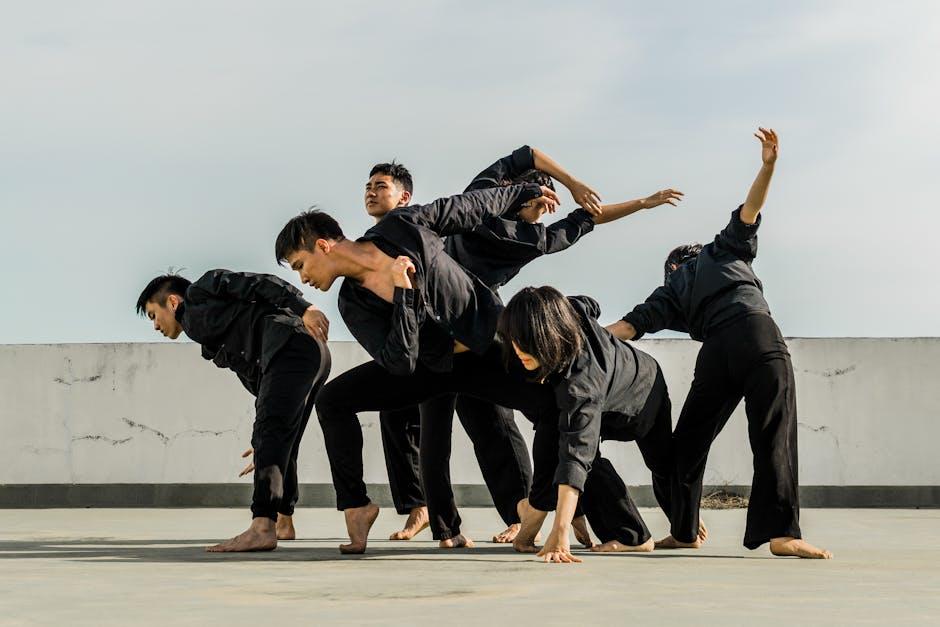In the intricate world of acting, where every gesture speaks volumes and silence can be more powerful than words, mastering body language is an essential skill for portraying complex characters. Actors transform scripts into living, breathing narratives, and it is through their nuanced physical expressions that they convey the unspoken depth of their roles. This article delves into the analytical process by which actors harness body language, exploring the techniques and training that enable them to inhabit their characters fully. From the subtle arch of an eyebrow to the deliberate pacing of a scene, we uncover how these performers craft authentic, compelling portrayals that resonate with audiences long after the curtain falls.
Understanding the Subtleties of Nonverbal Communication
In the world of acting, mastering nonverbal communication is crucial for bringing depth to a character. Actors employ a variety of techniques to hone this skill, often delving into the intricacies of body language to convey emotions and intentions that words alone cannot express. This subtle art involves understanding the nuances of gestures, facial expressions, and posture to create an authentic portrayal.
- Facial Expressions: A slight furrow of the brow or a gentle smile can speak volumes. Actors study the muscles of the face to control and manipulate expressions, ensuring they align with the character’s emotional state.
- Gestures: Hand movements, whether deliberate or subconscious, are powerful tools. They can illustrate a character’s confidence, hesitation, or internal conflict.
- Posture: The way an actor holds their body can define a character’s background, mood, or transformation. A slouched posture might suggest defeat, while a straight spine can indicate authority.
By immersing themselves in these subtleties, actors can create a rich tapestry of nonverbal cues that enhance their storytelling, allowing audiences to connect with characters on a deeper level.

Techniques for Embodying Emotion Through Movement
Actors transform scripts into living, breathing stories by channeling emotions through their physicality. Expressive movement becomes a powerful tool, allowing them to convey the unspoken depths of their characters. To achieve this, actors often employ several techniques:
- Body Mapping: This involves understanding the character’s physical traits and how these influence movement. By mapping out gestures and postures, actors can reflect a character’s inner world.
- Laban Movement Analysis: Developed by Rudolf Laban, this method categorizes movement into effort, shape, space, and body, helping actors to craft precise and intentional expressions.
- Mirroring and Mimicry: Observing real-life behaviors and incorporating them into performances allows actors to create authenticity and relatability in their portrayals.
By mastering these techniques, actors can effectively use their bodies as instruments of storytelling, transforming mere dialogue into a tapestry of human emotion.

Analyzing the Role of Physicality in Character Development
In the intricate tapestry of acting, physicality stands as a cornerstone for authentic character development. An actor’s ability to harness body language can transform a script into a living, breathing narrative. Facial expressions, for instance, serve as a window into a character’s soul, revealing unspoken thoughts and emotions. Subtle shifts in posture or the deliberate use of gestures can convey authority, vulnerability, or tension, offering audiences a deeper understanding of the character’s internal landscape.
To master this art, actors often engage in rigorous training that encompasses a variety of techniques. Some key approaches include:
- Method Acting: Immersing oneself in the character’s physical world to replicate genuine responses.
- Movement Workshops: Enhancing awareness of body mechanics to create distinct physical identities.
- Mime and Dance: Utilizing controlled movements to express complex emotions without words.
These techniques enable actors to craft multi-dimensional portrayals, where every movement serves as a narrative tool, enhancing the story’s depth and resonance.

Practical Exercises to Enhance Expressive Range
To truly master body language, actors engage in practical exercises that expand their expressive range. These exercises are crucial for developing the nuanced physicality required to embody complex characters. Here are some effective practices:
- Mimicry Drills: Actors observe and imitate everyday gestures, enhancing their ability to replicate diverse physical expressions. This builds a repertoire of movements that can be adapted for various roles.
- Emotion Mapping: By mapping emotions to specific physical actions, performers can discover how subtle changes in posture and movement convey different emotional states. This exercise deepens their understanding of non-verbal cues.
- Improvisational Movement: Engaging in unscripted, free-flowing movement sessions allows actors to explore spontaneous body language, fostering creativity and flexibility in their performances.
Through these methods, actors refine their ability to convey complex emotions and intentions, making their character portrayals more compelling and believable.

